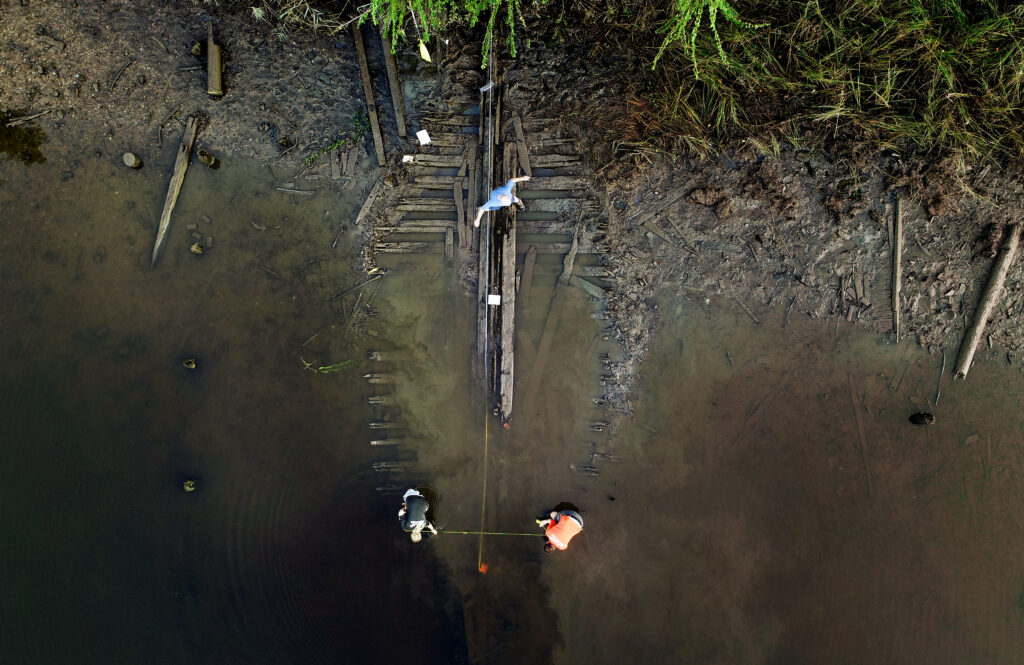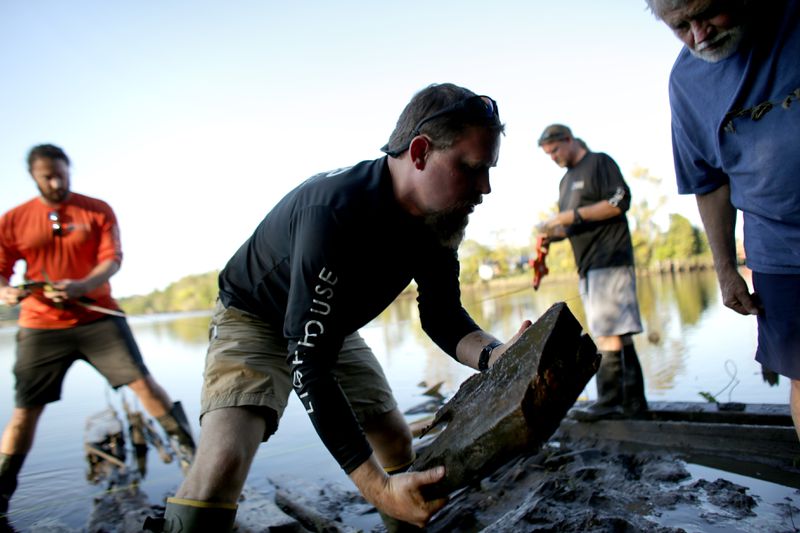Ghost fleet “hidden in plain sight”: Archaeologists are uncovering more than a dozen historic vessels from Nansemond River
What’s underneath? This is the big question that a group of archaeologists is delving and digging in Suffolk.

Suffolk history buff Kermit Hobbs stumbled over something that caught his attention from the Nansemond River two years ago. CNN reported.
“My friend and I, we were looking for an old dugout canoe that we thought was supposed to be in the woods when suddenly I saw posts sticking out of the mud,” said Hobbs.
So, he got out his drone to get a bird’s-eye view.
“It was amazing what we saw. It’s like we dug up a treasure, like a relic,” Hobbs explained.
Hobbs’ drone video revealed picture-perfect remnants of old wooden boats hidden in plain sight.
‘Greatest assemblages of historic wrecks’
“We believe this is one of the greatest assemblages of historic wrecks in Virginia that represents Chesapeake Bay maritime history for over a century,” said Brendan Burke, an archaeologist with the Lighthouse Archaeological Maritime Program.
Hobbs find piqued the interest of archaeologists from across the United States. Many were in Suffolk this month, excavating and recording the remains of what they call a “ghost fleet.”
The boats range in size from 50 to 80 feet.
“What started at six boats is now 13 — working craft boats, transportation boats, lumber boats, shingling boats and oystering,” said Burke.
Burke, who has conducted numerous studies of shipwrecks in Florida, is overseeing the project in consultation with Longwood University archaeologists and students.

The LU team is using a laser-scanning device to gather a high-density “point cloud” of the entire wreck complex for later use in creating a 3-D model of the wreck site.
“We are at the maritime front door of Suffolk. By researching these boats we are learning about the builders’ history, the sailors who were on them, and what they contained,” said Burke.
So far, the group has learned the date of the abandoned boat from back from the Civil War era to WWI.
“120 years ago, you would have seen an oyster house, docks, and a dozen or so boats, so they could be a part of that,” Burke explained.
The boats sit on private property on the Nansemond River and will not be removed.
Dr. John Broadwater is participating on behalf of the Virginia Department of Historic Places, which is funding the project through its Threatened Sites program.





